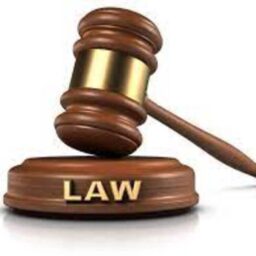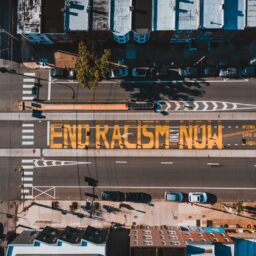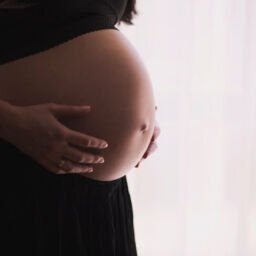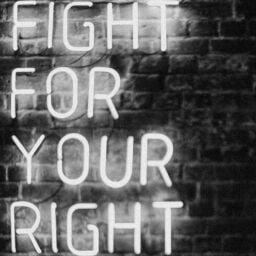
OVERVIEW
Torts and criminal law have overlapped multiple times, generating a very comprehensive legal history and numerous legal philosophical questions. This paper is an analysis of the interrelations of criminal law and torts for the same wrong and its basis in the OJ Simpson murder case. The paper begins with an analysis of the merger rule in tortious and criminal wrongs. It tries to understand the merger of the two branches while there are court trials for a criminal wrong and a tortious act; either simultaneously or successively. It also explores the moral and legal culpability of the defendant in terms of opposing decisions reached by the criminal court and the civil court with a special focus on the case of OJ Simpson.
The primary sources of information for this paper are the paper by Matthew Dyson titled Overlaps and Undercurrents: The Timing of Tortious and Criminal Actions for the Same Wrong (2011) published by the University of Cambridge and the article by Jerome Hall titled Interrelations of Criminal Law and Torts: II (1943) published in the Columbia Law Review. The case referred to in this paper is Rufo v. Simpson (2001).
INTRODUCTION
There have been numerous instances where a criminal act has been committed and civil action for damages has been brought up for the same. When an act is committed which has the capacity to introduce two suits, civil and criminal, in the course of law, we witness the merging of two different branches of law. This merging of the two branches has been governed in English law by what is known as the “merger rule”, which denotes a sort of ‘pre-eminence of criminal law where civil and serious criminal liability co-exist’.[1]
(A) Merger Rule
Dyson, in his paper talks about three phases in the history of the merger rule; the first phase where the merger rule was set in place specifically to safeguard the state’s interests and encourage private prosecutions, the second phase where the courts stabilized the rule, albeit temporarily, by settling on a sanction, and finally, the third phase where the merger rule was resurrected as the discretionary power to suspend a parallel civil claim where the interests of the defendant, and not the state, are jeopardized.
There exists a belief in English law that a ‘confusion’ will be created when one branch of the law(torts) is taken into consideration as the law of another branch(criminal). This belief manifests into either a complete disentanglement of tort and criminal law rules or a preferential bias towards one branch’s rules. Dyson argues that for this belief to be countered and the merger rule to be better understood, there needs to be an exploration of the numerous unique arguments on the merger rule and the outcomes of the same. Yet Dyson’s points are restricted to simultaneous suits (civil and criminal) for the same wrong and not successive.
(B) Moral Culpability
When we discuss successive suits i.e. a civil suit following a criminal one, the question of both moral and legal culpability comes into question. The question arises of whether moral culpability interacts with tort law and criminal law in similar ways. In Kenny’s Outlines of Criminal Law, he concluded that criminal wrongs and civil wrongs aren’t sharply separated groups of acts; but are often the same act as viewed from different standpoints, the difference being one of relation and not one of nature.[2] Jerome Hall, in his paper, argues that it would be fallacious to call the harms in both cases identical since torts include actual damages to the person while in crimes, damages aren’t the necessity, the notion of a ‘social harm’ is.[3]
Yet, moral culpability in torts is very different from moral culpability in criminal law. The reason for this is similar to what Hall has propounded in his paper of 1943, and justified by the OJ Simpson Murder Case. What may constitute personal damage may not necessarily constitute social harm and vice-versa. In the criminal trial of OJ Simpson, social harm was not constituted according to the court, but in the subsequent civil trial, personal damages to the victims’ families were awarded and the court held Simpson responsible for the punitive damages. This juxtaposition of culpability and the implications it had with respect to the OJ Simpson murder case is further discussed in the next section.
(C) The OJ Simpson Murder Case and the Subsequent Civil Trial
The OJ Simpson Murder Case refers to the case of The People of the State of California v. Orenthal James Simpson, where OJ Simpson was tried and acquitted on two counts of murder in 1994 for the deaths of his ex-wife Nicole Brown Simpson, and her friend Ron Goldman. While strong evidence pointed towards his guilt, the criminal court found Simpson innocent of the charges. A civil action was brought up by the relatives of the deceased, and the trial court found Simpson guilty of the murders and held that Simpson was liable to pay punitive damages and compensatory damages to the estate of Nicole Brown, and compensatory damages to the estate of Ronald Goldman. The Court of Appeals found the evidence sufficient to prove that Simpson was the murderer and thus, affirmed the judgement of the trial court. The surprising, and controversial thing here was that while the criminal court found OJ Simpson innocent, the civil court found him guilty of the murders. This led to a duality in the culpability of OJ Simpson.
While on one hand, he was innocent of the crimes he was accused of, on the other, he was being made to pay the punitive and compensatory damages for the deaths of the victims. This dubiety in the final moral culpability and also the legal culpability of Simpson is a problem that arises when there is contention between civil and criminal law. This inconsistency between the decisions of the two courts can be detrimental to the defendant and the society at large. Inconsistency in a legal context is never a good thing and inconsistency in such a serious case was not appreciated by the society at large. Even the legal community was in a troubled position. Dubious moral culpability and opposing legal culpabilities open up an entirely new avenue of legal questions which have yet to be discussed in detail by the legal community.
CONCLUSION
While numerous cases have both a criminal aspect and a civil aspect to them, this merging of tort and criminal law hasn’t been the subject of extensive research despite it having a rich, extensive legal history. Such research studies are necessary to ensure that the inconsistency in two different court decisions, as in the Simpson case, isn’t repeated. The merging of the two branches also shows, in Dyson’s words, just how intricate the interfaces of tort and crime can be.[4] A thorough understanding and interpretation of the fundamental principles that link tort and criminal law is a necessary precondition for further studies.
Author Name – Smruti Bhutada (Jindal Global Law School, Sonipat)
Reference(s):
[1] Matthew Dyson, Overlaps and Undercurrents: The Timing of Tortious and Criminal Actions for the Same Wrong, PAPER NO. 48/2011. UNI. OF CAMBRIDGE, October, 2011, at 2.
[2] KENNY, OUTLINES OF CRIMINAL LAW, 22 (1936).
[3] Jerome Hall, Interrelations of Criminal Law and Torts: II, Vol XLIII (7), COLUMBIA L. REV., 967, 969, (1943).
[4] Matthew Dyson, Overlaps and Undercurrents: The Timing of Tortious and Criminal Actions for the Same Wrong, PAPER NO. 48/2011. UNI. OF CAMBRIDGE, October, 2011, at 3.
5. Matthew Dyson’s Overlaps and Undercurrents: The Timing of Tortious and Criminal Actions for the Same Wrong (2011)
6. Jerome Hall’s Interrelations of Criminal Law and Torts: II (1943)
7. Rufo v. Simpson (2001)
8. The People of the State of California v. Orenthal James Simpson (1995)
















